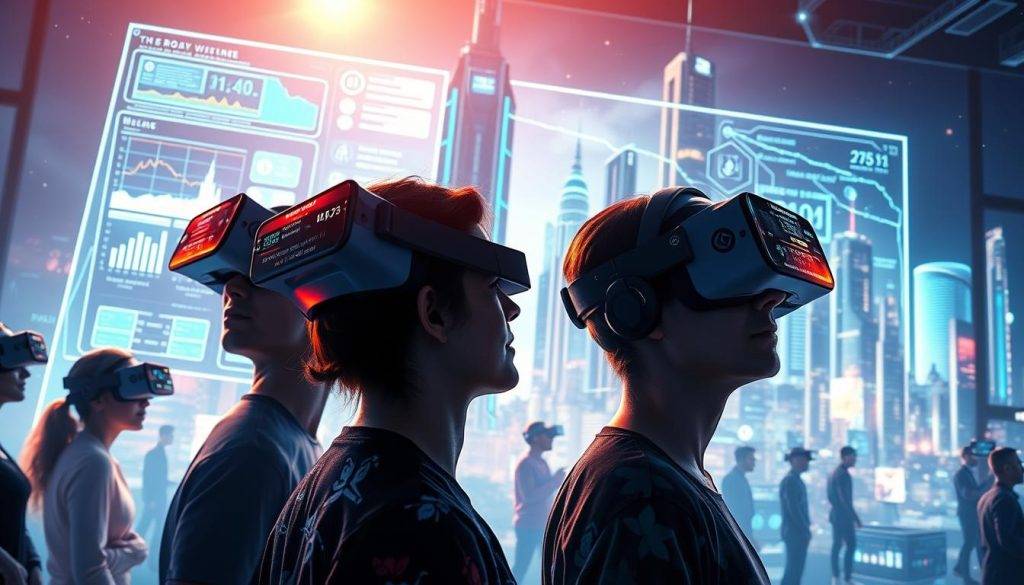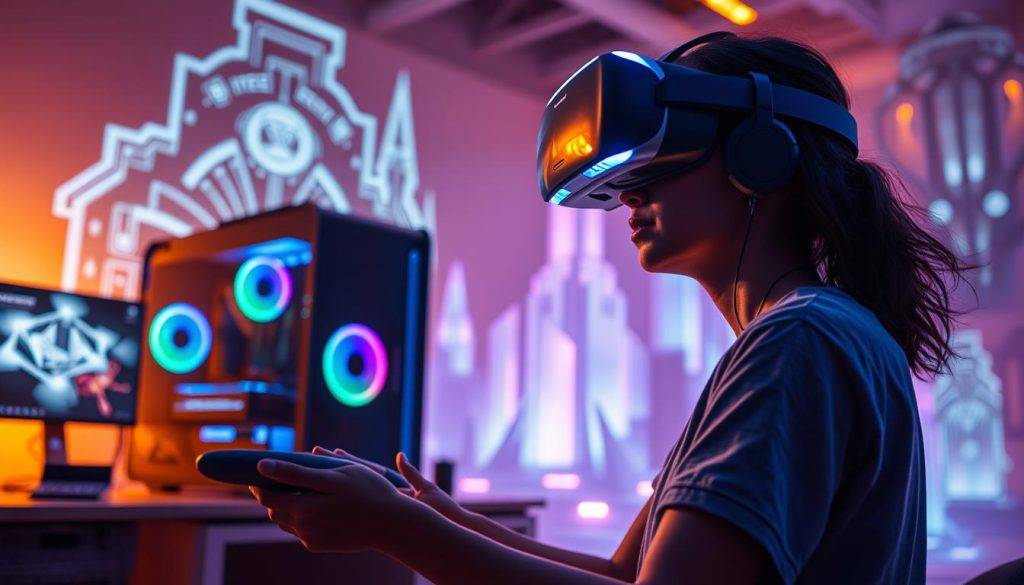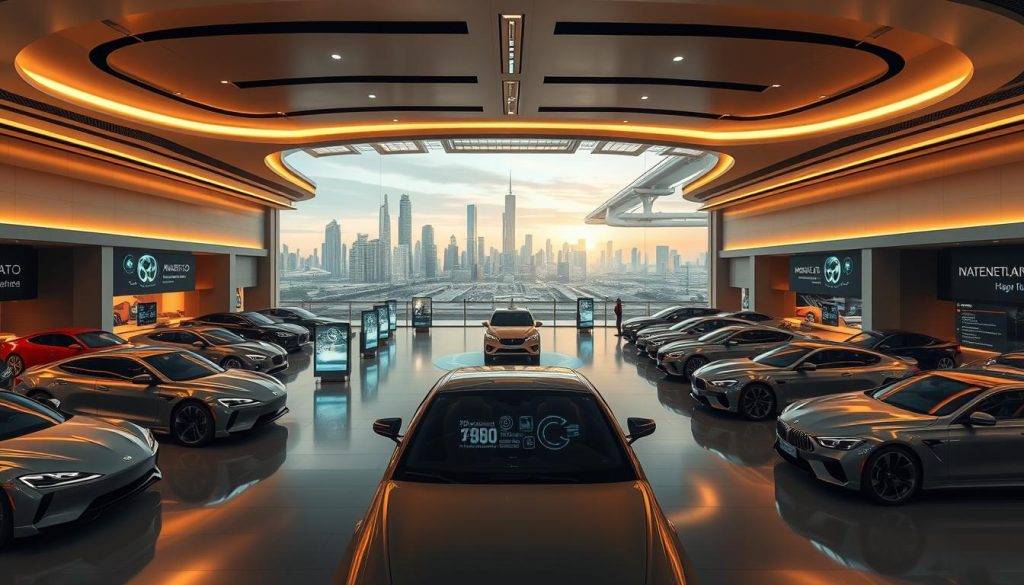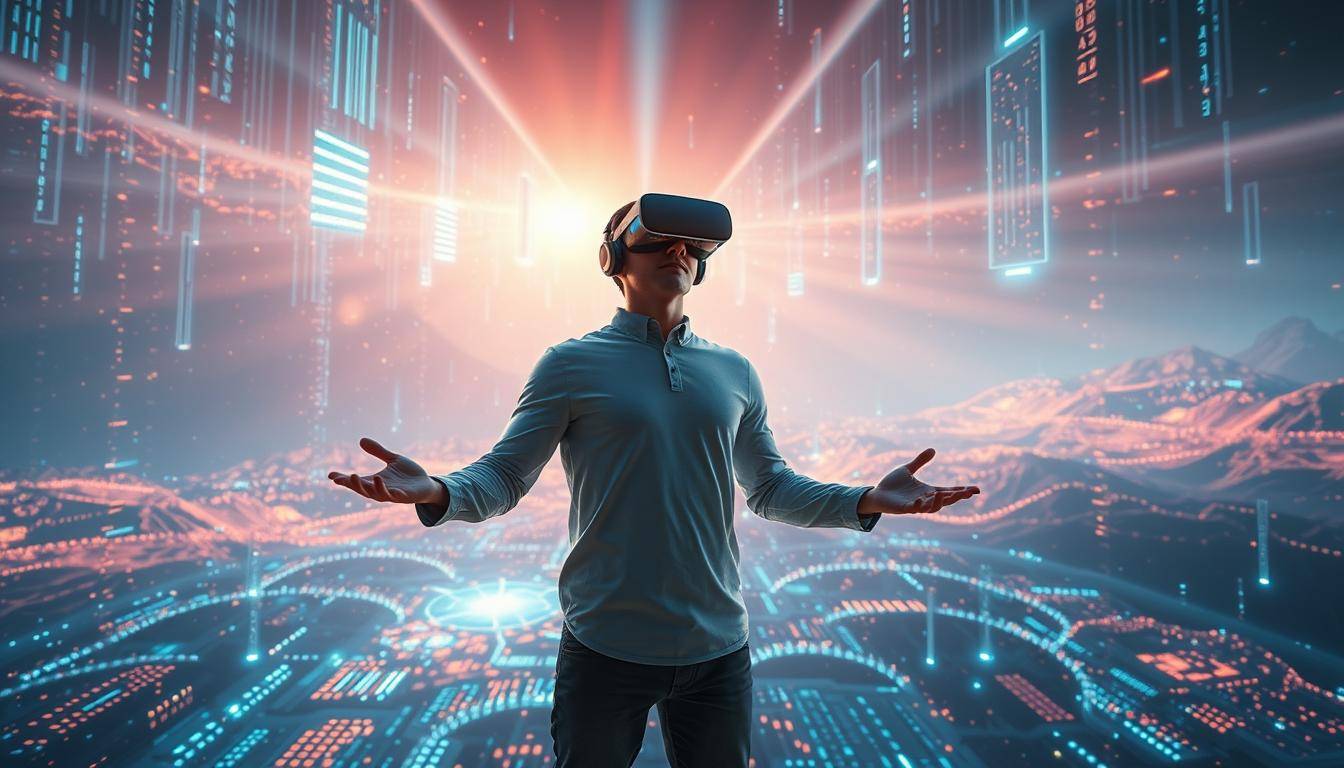“The future belongs to those who believe in the beauty of their dreams,” Eleanor Roosevelt once said. Today, this vision takes on new meaning as immersive digital spaces redefine how we shape ideas, goals, and identities. Imagine a world where creative visualization merges with cutting-edge technology—a place where personal growth and brand innovation thrive in limitless virtual environments.
Leading companies like Walmart, Gucci, and Alo Yoga are already harnessing this potential. By blending real-world influence with digital experiences, they craft interactive campaigns that resonate globally. These experiments reveal how virtual reality isn’t just entertainment—it’s a tool for building meaningful connections and manifesting ideas at scale.
What makes these environments transformative? Advanced technology provides the foundation, but human vision fuels progress. From collaborative workspaces to branded ecosystems, innovators design worlds where users learn, create, and grow. This synergy between imagination and engineering reshapes how we perceive value in both physical and digital realms.
For individuals, these tools offer unprecedented opportunities. You can prototype business concepts, refine skills through simulations, or explore self-expression in curated spaces. The metaverse’s evolving landscape invites everyone to participate in shaping tomorrow’s realities—starting today.
Key Takeaways
- Major brands like Gucci and Walmart use virtual environments to engage global audiences.
- Immersive experiences blend real-world influence with digital innovation.
- Technology and creativity together drive meaningful connections in digital spaces.
- Early experiments highlight the metaverse’s potential for personal and professional growth.
- Users can leverage these tools to prototype ideas and explore new forms of self-expression.
Exploring the Digital Frontier of Virtual Worlds
Digital landscapes are evolving faster than ever. Platforms like Fortnite and Roblox now host concerts attended by millions, while brands like Nike create virtual stores mirroring physical locations. These spaces blend creativity with commerce—reshaping how we interact with technology and each other.

Understanding the Evolving Landscape of Virtual Reality
Modern tools let users build 3D worlds once limited to sci-fi novels. Take Ready Player One—this story predicted how immersive environments could become cultural hubs. Today’s applications go further. Architects test building designs in simulated cities, while medical students practice surgeries in risk-free zones.
Real-time data integration makes these experiences feel authentic. A Gartner study shows 78% of users prefer digital spaces that mimic real-world physics. This demand drives innovations like haptic feedback gloves and 360-degree soundscapes.
Bridging Physical and Digital Experiences
Live events exemplify this fusion. When Travis Scott performed in Fortnite, 12 million fans joined—dancing as avatars while chatting via headsets. Retailers replicate this approach. Gucci’s virtual sneakers sold out faster than physical ones, proving digital goods hold tangible value.
Businesses face new challenges here. Creating seamless cross-platform journeys requires collaboration between designers, engineers, and marketers. Yet the rewards outweigh risks. Brands mastering this balance gain loyal communities and fresh revenue streams.
Looking ahead, focus on user-centric design and interactive storytelling. Whether hosting global conferences or art exhibitions, prioritize experiences that spark genuine connection. The digital frontier rewards those who blend innovation with empathy.
Metaverse Manifestation: Transforming Trends and Personal Growth
What if your daily habits could shape digital realities as effortlessly as physical ones? The rise of Web3 has birthed an experiential economy where interactions create tangible value—both for individuals and organizations. This shift moves beyond passive consumption, empowering users to co-create worlds that reflect their aspirations.

Embracing Experiential Economy in Web3
Platforms like Decentraland and Sandbox demonstrate how virtual land ownership fuels entrepreneurship. A fashion designer might host digital pop-up shops, while a life coach offers creative visualization techniques through avatar-led workshops. These activities generate real income—72% of Web3 users report improved skills through such immersive participation, according to 2023 Blockchain Council data.
Impact on Community Engagement and Brand Innovation
Forward-thinking companies build loyalty through shared digital journeys. Nike’s .Swoosh platform lets fans design virtual sneakers, with top creations becoming physical products. Sephora’s BeautyHub offers makeup tutorials in VR lounges, blending education with social connection.
Three key strategies drive success:
- Co-creation frameworks: Invite users to contribute ideas for products or events
- Skill-based rewards: Offer NFTs for completing challenges or mastering new abilities
- Cross-reality integration: Sync digital achievements with real-world perks
These approaches transform engagement from transactional to transformational. As users see their input shape brands they love, a powerful cycle of mutual growth emerges—proving that in well-designed virtual spaces, every interaction can be a step toward personal and collective evolution.
Innovative Trends Shaping Virtual Reality Visualization
Gaming platforms are rewriting the rules of social connection. From virtual concerts attracting millions to avatar-driven marketplaces, interactive environments now blend entertainment with community-building tools. This fusion creates laboratories for testing ideas that reshape how we work, play, and connect.

The Role of Gaming, Social Media, and Immersive Experiences
Platforms like Fortnite demonstrate how multiplayer games evolve into social hubs. When Ariana Grande performed there, fans didn’t just watch—they flew through rainbow-filled skies while chatting via voice features. Roblox takes this further, letting users host fashion shows or coding workshops in customizable spaces.
Social media strategies amplify these experiences. Brands now live-stream product launches within games, merging TikTok-style engagement with 3D exploration. “The line between gameplay and social networking is dissolving,” notes Epic Games’ CEO Tim Sweeney. Users spend 40% more time in worlds offering collaborative challenges versus passive viewing.
Leveraging Digital Twins, Blockchain, and NFT Experiments
Digital twins—virtual replicas of physical systems—help companies optimize real-world operations. BMW uses them to simulate factory layouts, cutting production errors by 18%. Architects employ real-time analytics from these models to adjust building designs mid-construction.
Blockchain adds trust to digital ownership. Nike’s .Swoosh platform lets fans earn NFT sneakers through design contests, with top creations becoming physical products. These experiments face hurdles—like balancing creativity with cybersecurity—but prove users value unique digital assets tied to real rewards.
Three emerging opportunities stand out:
- Cross-platform storytelling: Games like Ready Player One-inspired experiences reward players for solving puzzles across apps
- Skill-based economies: Users monetize talents through blockchain-verified credentials
- Hybrid events: Concerts where avatars interact with IoT-connected stage effects
While technical complexity remains a challenge, these trends empower creators to build worlds where every interaction holds transformative potential.
Predictions and Business Implications in the Evolving Metaverse
Industry leaders predict hybrid workspaces will become the norm by 2030, blending physical offices with persistent 3D environments. McKinsey forecasts a $5 trillion market value for immersive technologies within seven years—a shift reshaping how companies innovate and scale. Forward-thinking brands already prototype products in virtual showrooms, host global conferences in digital arenas, and train teams through AI-powered simulations.

Opportunities for Remote Work and Digital Collaboration
Virtual environments eliminate geographical barriers. Home Depot’s virtual kitchen design tool increased customer engagement by 34%, allowing real-time co-creation with designers across time zones. Digital twins—virtual replicas of factories or supply chains—let engineers troubleshoot issues remotely, cutting downtime by 22% according to PwC data.
Three emerging trends redefine teamwork:
- Persistent workspaces: Always-accessible 3D offices where avatars leave sticky notes or brainstorm on virtual whiteboards
- Skill-based avatars: Profiles displaying verified credentials for blockchain, coding, or project management
- Cross-platform events: Product launches streamed simultaneously in VR and mobile apps
Balancing Innovation With Security
As digital interactions grow, 67% of companies report increased cybersecurity risks in immersive platforms. Blockchain solutions now authenticate NFT assets and secure virtual transactions. Gucci’s Vault platform uses encrypted ledgers to track limited-edition digital fashion items, merging exclusivity with transparency.
| Challenge | Current Solutions | Future Strategies |
|---|---|---|
| Data Privacy | Role-based access controls | AI-driven anomaly detection |
| Asset Security | NFT ownership verification | Quantum-resistant encryption |
| User Safety | Avatar moderation tools | Behavioral biometrics |
“The companies thriving tomorrow are those experimenting boldly today,” states Accenture’s metaverse lead. By 2025, Gartner predicts 30% of enterprises will deploy dedicated teams to manage virtual ecosystems—proving that strategic experimentation unlocks lasting value in this evolving frontier.
Conclusion
As digital and physical realities converge, the tools shaping our world reveal unprecedented potential. Virtual environments empower users to prototype ideas, refine skills, and connect across borders—blending creativity with measurable outcomes. Innovations in gaming mechanics, blockchain ecosystems, and collaborative workspaces prove these platforms are more than trends—they’re catalysts for growth.
Companies like Nike and BMW demonstrate how strategic experimentation builds value. By inviting users to co-create products or optimize operations through digital twins, brands foster loyalty while driving real-world results. These real-world business applications highlight a critical truth: success hinges on adaptive strategies that prioritize both innovation and user needs.
For individuals, these spaces offer playgrounds for self-reinvention. Whether designing virtual fashion or mastering remote teamwork, every interaction becomes a stepping stone toward personal evolution. The key lies in embracing curiosity—testing new tools, learning through immersive experiences, and iterating fearlessly.
As technology advances, one principle remains timeless: human vision fuels progress. Those who harness emerging tools today will shape tomorrow’s opportunities. The journey starts now—what will you build?
FAQ
How do virtual environments enhance personal growth strategies?
Immersive platforms like Roblox or Fortnite Creative allow users to simulate real-world scenarios, practice skills, and visualize goals in risk-free digital spaces. This bridges mindset development with actionable experimentation.
What industries benefit most from Web3 experiential trends?
Fashion brands like Gucci and Balenciaga use virtual showrooms for global reach, while tech firms leverage digital twins for prototyping. Education and healthcare sectors also adopt VR for immersive training simulations.
Can decentralized technologies impact community building?
Blockchain-based platforms enable transparent ownership through NFTs, fostering engaged communities. Projects like Decentraland demonstrate how shared virtual spaces create collaborative economies where users co-create value.
What security challenges exist in persistent digital worlds?
Data privacy remains critical as platforms collect biometric and behavioral data. Solutions like Microsoft Mesh emphasize enterprise-grade encryption, while user education prevents phishing in NFT marketplaces.
How does VR visualization differ from traditional goal-setting methods?
Spatial computing devices like Meta Quest Pro provide multisensory engagement, activating neural pathways more effectively than journaling alone. Real-time feedback loops accelerate habit formation through embodied experiences.
Are virtual events replacing physical conferences?
Hybrid models dominate – NVIDIA’s GTC conference uses Omniverse for interactive sessions while maintaining in-person options. Digital twins of venues like CES expand accessibility without eliminating tactile networking benefits.
What skills prepare professionals for Web3 career opportunities?
Cross-disciplinary fluency in 3D design tools like Blender, blockchain fundamentals, and community management strategies proves valuable. Adaptive learning beats specialization in this rapidly evolving space.
How do digital twins influence real-world decision-making?
Companies like BMW use factory simulations to optimize production lines before physical changes. Urban planners employ city-scale twins to test sustainability initiatives, reducing implementation risks through predictive modeling.




























































